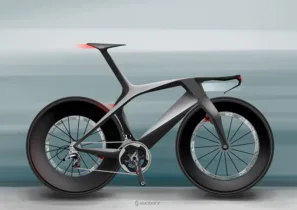This wildly shaped Colnago Y1Rs aero road bike feels like a seismic shift for one of the most well-known Italian bike companies in the world. While most big bike players have built full aero road bikes for years, Colnago had been something of a traditionalist holdout – sticking with subtle aero tweaks to their light all-road race bike, or only going completely aero for time trials. And thanks to the dominant riding of Tadej Pogačar, they still managed to win heaps of races and grand tours.
But the situation has changed. And now Pogi has a much more aero bike to take on those flatter, faster days of bike racing…
All-new Colnago Y1Rs proper aero road race bike
The new aerodynamic bike is a major technological shift for Colnago, interestingly at the same time they are modernizing steel road bike production and honoring their classics, too. With the all-new Y1Rs aero road bike, Colnago has created a new aerodynamic benchmark for themselves for top-tier racing. And it’s been a surprisingly long-time-coming, with multiple Tour de France wins in recent years. But maybe this wild all-new design explains a bit more why it took so long.
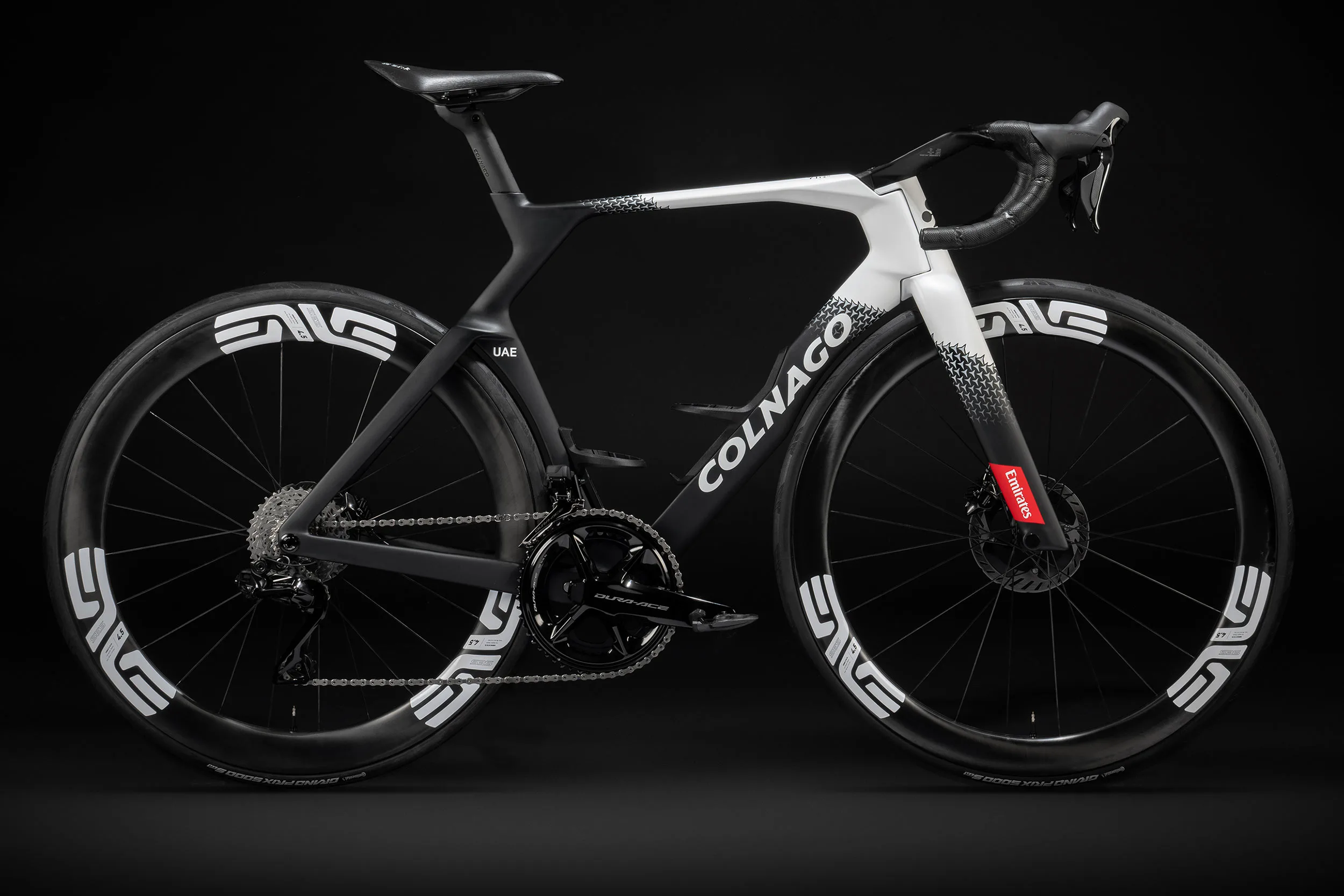
“Developed in close collaboration with Politecnico di Milano and Khalifa University, the Y1Rs represents a leap forward in design and technology, offering riders a bike built to meet the highest demands of speed and precision.“
Why did they wait so long to go fully aerodynamic?
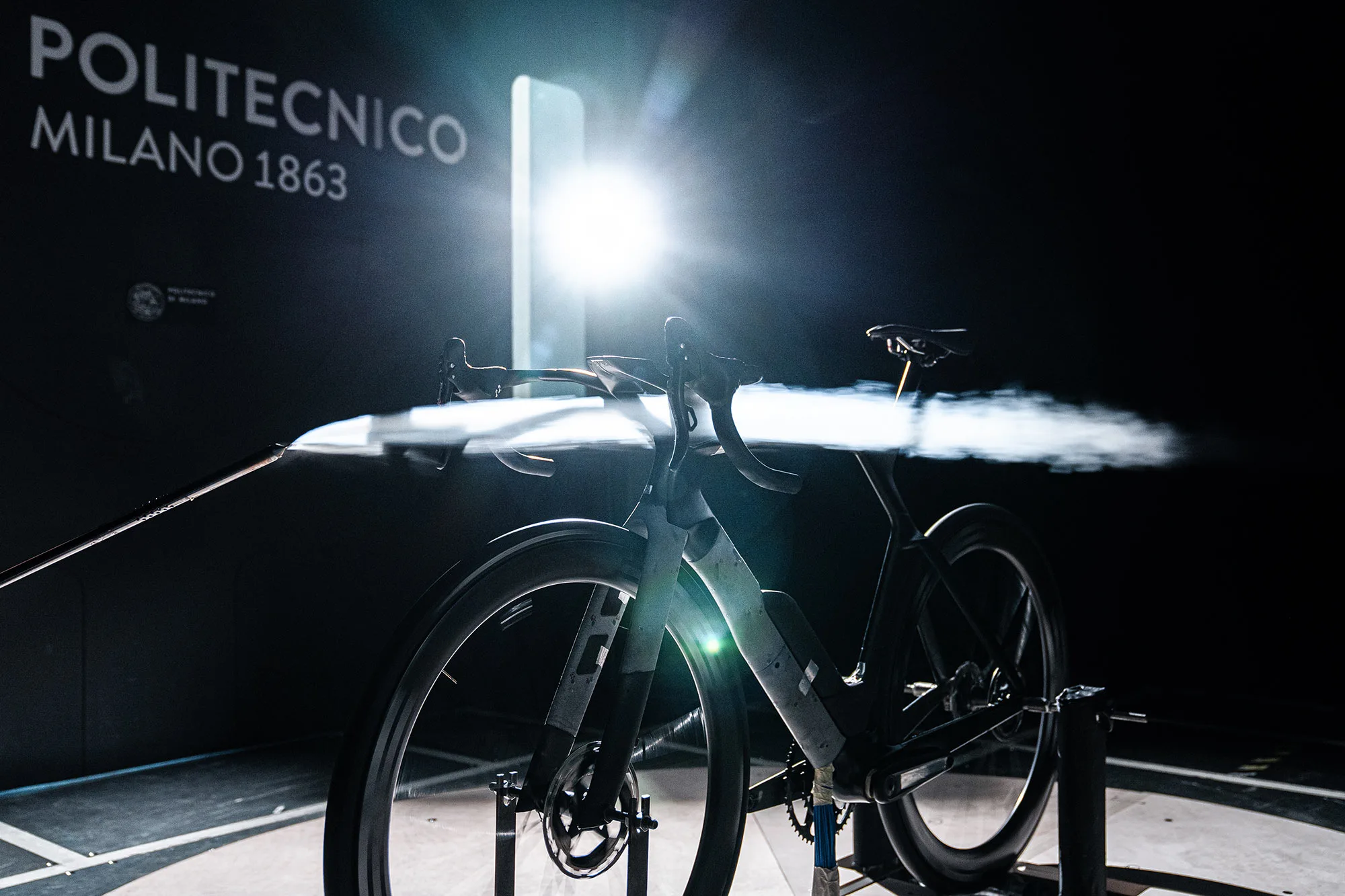
It seems with the previous UCI regulation on tube shapes, Colnago figured they could get the most all-around benefit out of just evolving their V4Rs platform to balance lightweight and aerodynamics. But once the UCI ditched that 3:1 regulation, it was time to completely rethink how aero Colnago could go with this more flexible framework.

Limitations in CFD accuracy and reliability led Colnago to develop a better simulation model. So, this new aero road bikes was developed more in the wind tunnel than just CFD to ensure more realistic results. What they did was start in CFD then quickly move to 3d printed elements layered over a modular platform that they could take into the wind tunnel.
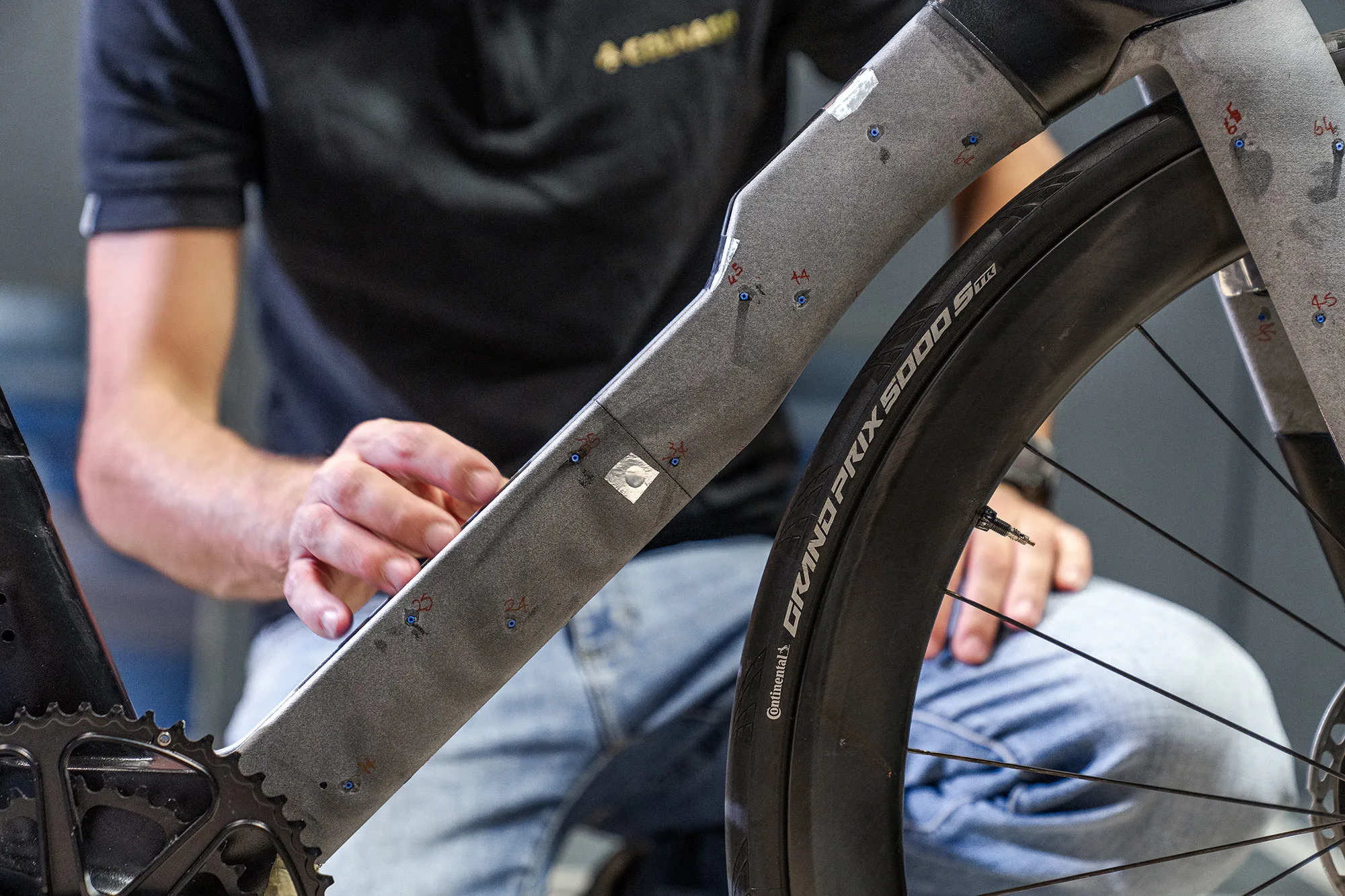
Then, adding tons of tiny pressure sensors in small holes drilled into the mock-up, Colnago measured the real airflow over the prototypes to collect more accurate data. And with that, they refined their CFD process creating a wind model they say was twice as accurate as anything else used in the bike industry.
“A bike that is, according to our studies, the most aerodynamic UCI-compliant road bike in the World Tour“
What’s new?
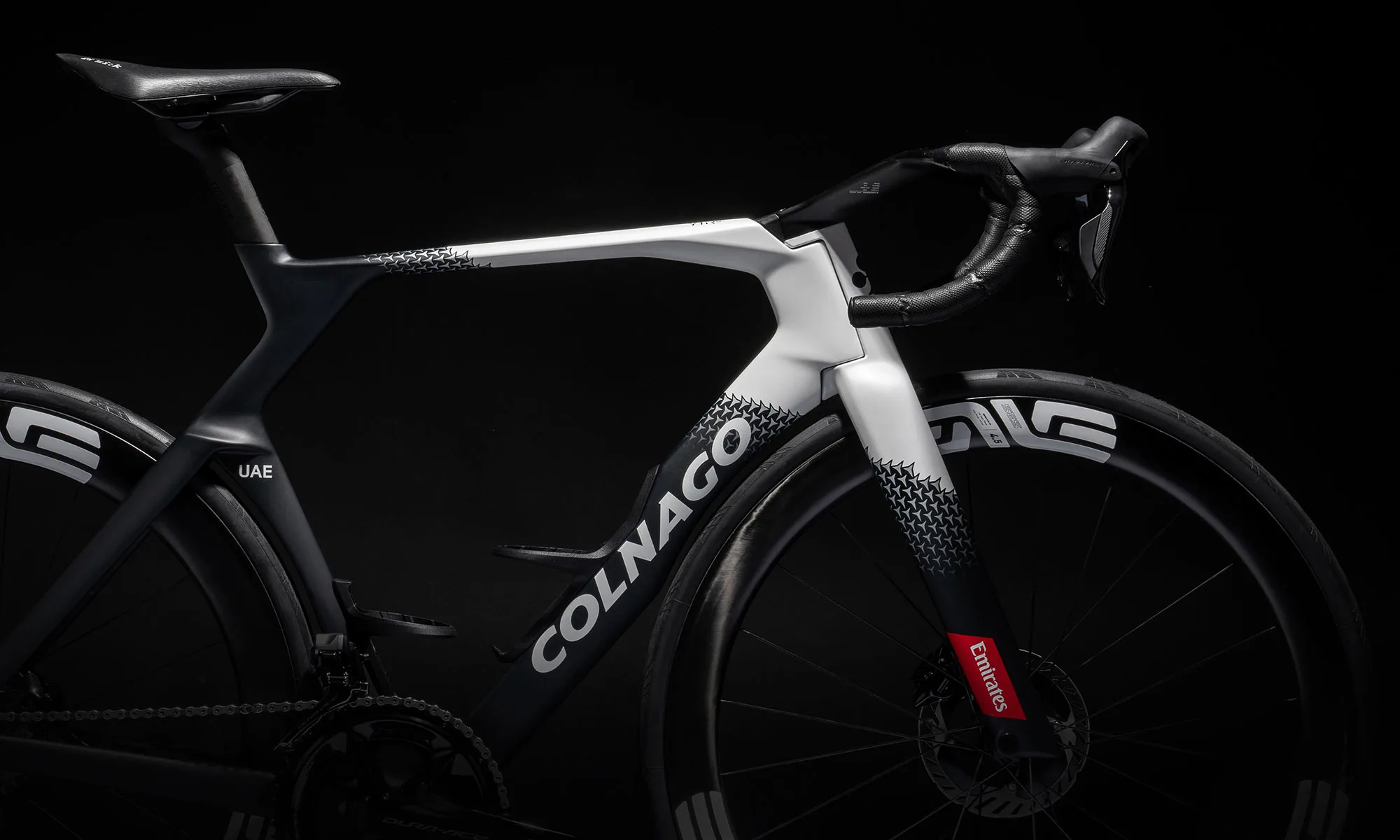
All of that led to an innovative new design that mashes up time trial-inspired aerodynamics to create a light and manageable aero road bike for everyday racing. As they describe it, “A bike that is, according to our studies, the most aerodynamic UCI-compliant road bike in the World Tour“.
- Bayonet fork with external steerer in front of the headtube
- DEFY seat cluster, decoupling the seatpost & seat tube
- WYND gull wing handlebar cockpit
- curved/kinked downtube to hug the front wheel
- integrated aero bottle cages
- frame geometry?
Bayonet fork
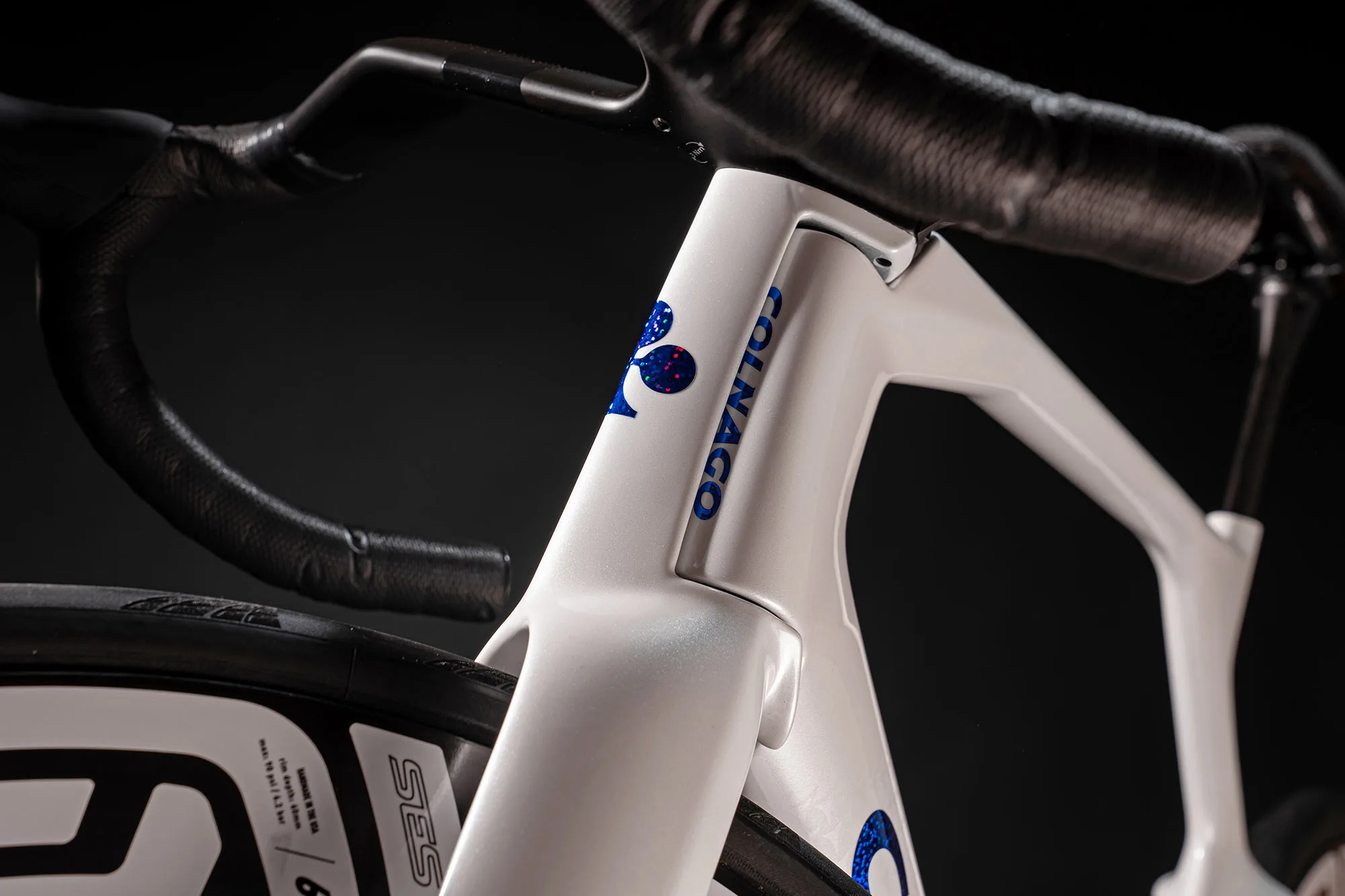
The Bayonet fork design is simply the result of being able to extend the narrow aero section of the headtube without running afoul of the UCI’s rules – inspired by the Colnago TT1. Longer narrower airfoils just have lower drag. The double steerer (1 inside & 1 outside the headtube) allows for increased stiffness, even with smaller headset bearings.
DEFY seat cluster

The Defy seat cluster is a 2-fold solution. First, without the conventionally-vertical tube shape, the two angled sections of seat tube get effectively deeper relative to the movement of air, while still fitting into the UCI tube shape limitations. Secondly, Colnago says that aero bikes are generally too stiff, so decoupling the straight line from saddle to bottom bracket introduces vertical compliance for improved rider comfort, especially with the now slacker angle of the short post. Once the proprietary seatpost is cut, the rider still has 1.5cm of height adjustment.
WYND bar

The Wynd bar is essentially the same solution just rotated horizontally, with upturned wings said to deflect air away from the turbulence around the centerline of the bike. Yet, while Defy aims for flex, Wynd is said to be the stiffest handlebar setup that Colnago has tested.
Aero downtube & cages

The all-new downtube shape manages to closely follow the front wheel in the upper half of the tube. Then, it gets a kink just at the end of the wheel’s curve to tuck the main water bottle neatly into the frame. Colnago explains that their CFD analysis showed aero benefit to having the front wheel tucked close to the frame or set further apart, depending on each portion of the spinning wheel. So their solution does both in what they describe as, “the final word on the optimal downtube configuration within the limits of current UCI regulations.“
In the end, all of the Colnago analysis showed that conventional water bottles are not very aerodynamic, but they are such a simple & effective solution. But, by tucking aero cages directly into the downtube like this (which we’ve also seen from BMC), they got aero gains with real-world practicality.
So, how fast is a Colnago Y1Rs aero road bike?
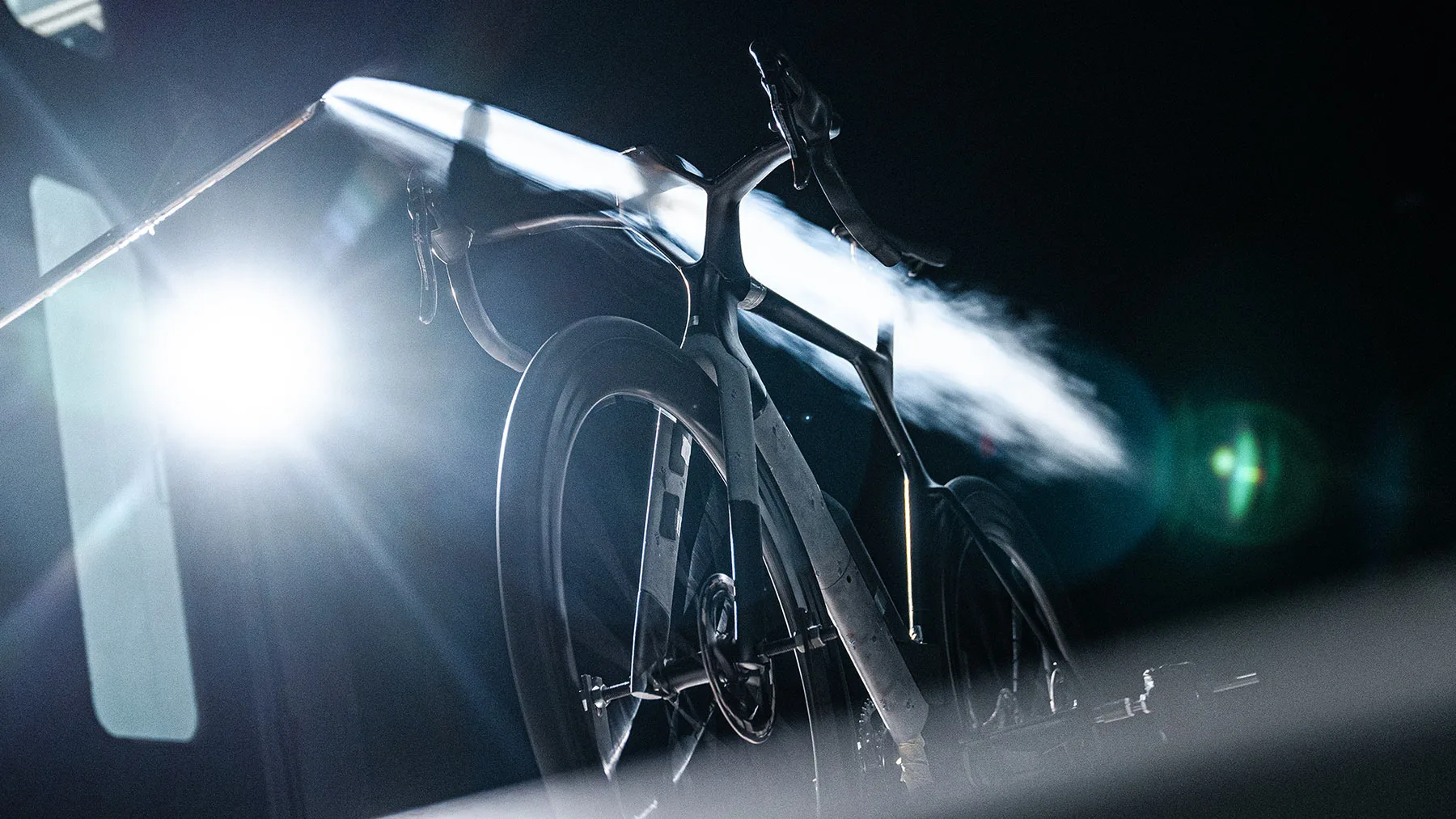
Ultimately, the refined aero solution resulted in a 19% reduced frontal area compared to the V4Rs. That alone was sure to make it faster. But then, testing the complete bike head to head with its “best” aero road bike competitor, Colnago says the new Y1RS “outperformed it in any wind conditions“.
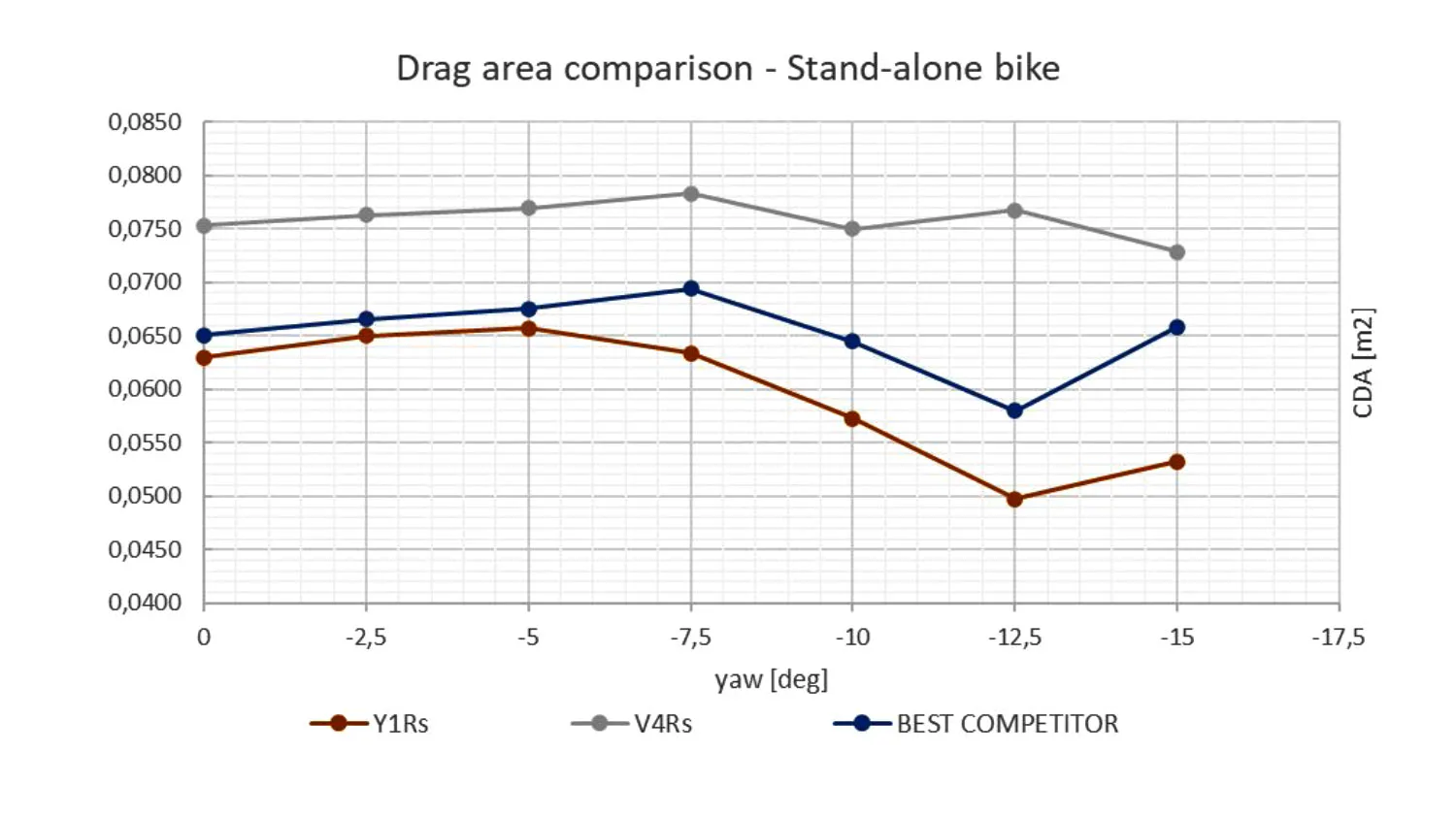
The weighted average drag gains are pretty big according to Colnago data. The Y1Rs saves just a single watt straight into the wind, but 8W less compared to its best aero competitor. And a 25W savings vs. the all-rounder V4Rs, further quantifying the rationale for finally getting around to building a proper full aero road race bike.
Geometry
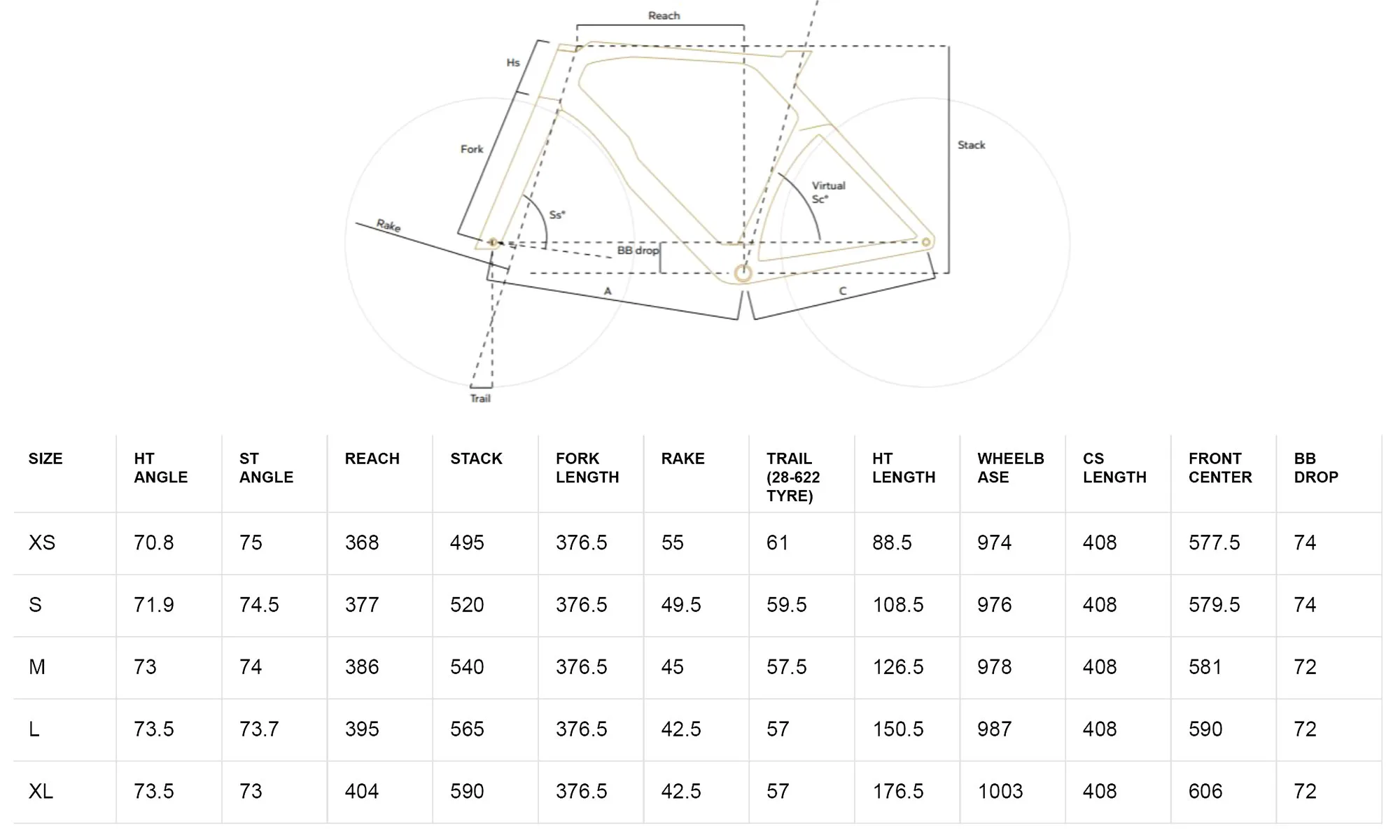
The new MY25 Colnago Y1Rs comes in 5 stock sizes (XS-XL) just like the V4Rs. But the new bike’s geometry has been refined, working with both the pro men of UAE Emirates and pro women of UAE ADQ to improve high-speed handling and control for flat and rolling racing.
This all-new aero road bike features a much steeper headtube angle at 73-73.5° for the larger bikes, and marginally steeper for smaller sizes that are more limited by toe overlap. Plus, a steeper effective seat angle and longer frame reach to put the rider further forward in their aero tuck.
Each frame size also gets its own fork, customized to make sure Trail is consistent for predictable handling in all sizes.
Tech details
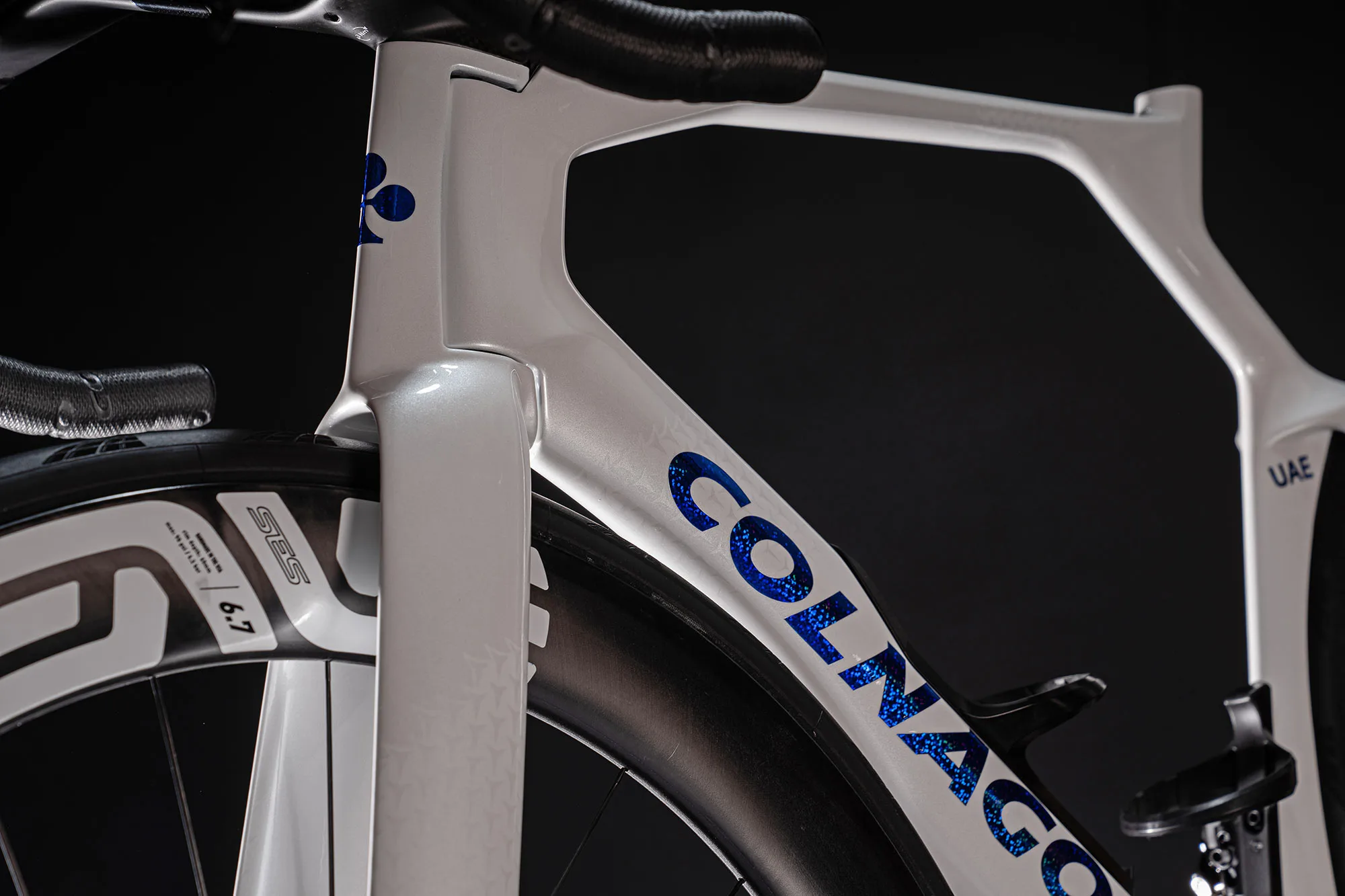
Colnago assures that the Y1Rs is still a lightweight race bike. The raw unpainted Y1RS frame weighs 965g, plus 450g for the fork. At the same time, it equals the V4RS in stiffness, actually inching up 3.5% stiffer when out of the saddle sprinting.
- UCI approved
- full carbon Y1Rs frame & bayonet fork
- integrated fully internal cable routing
- straight 1 3/8″ carbon steerer tube with CeramicSpeed SLT headset bearings
- electronic shift, disc brake only
- proprietary aero cut-to-fit seatpost with 0 or 15mm offset
- wedge-style seatpost clamp
- 12mm thru-axles & flat mount brakes 160mm front/140mm rear
- threaded BSA bottom bracket
- 32mm max tire clearance
- 7.51kg race weight, complete size M bike with pedals in UAE Team Emirates pro team build
2025 Colnago Y1Rs – Pricing, options & availability
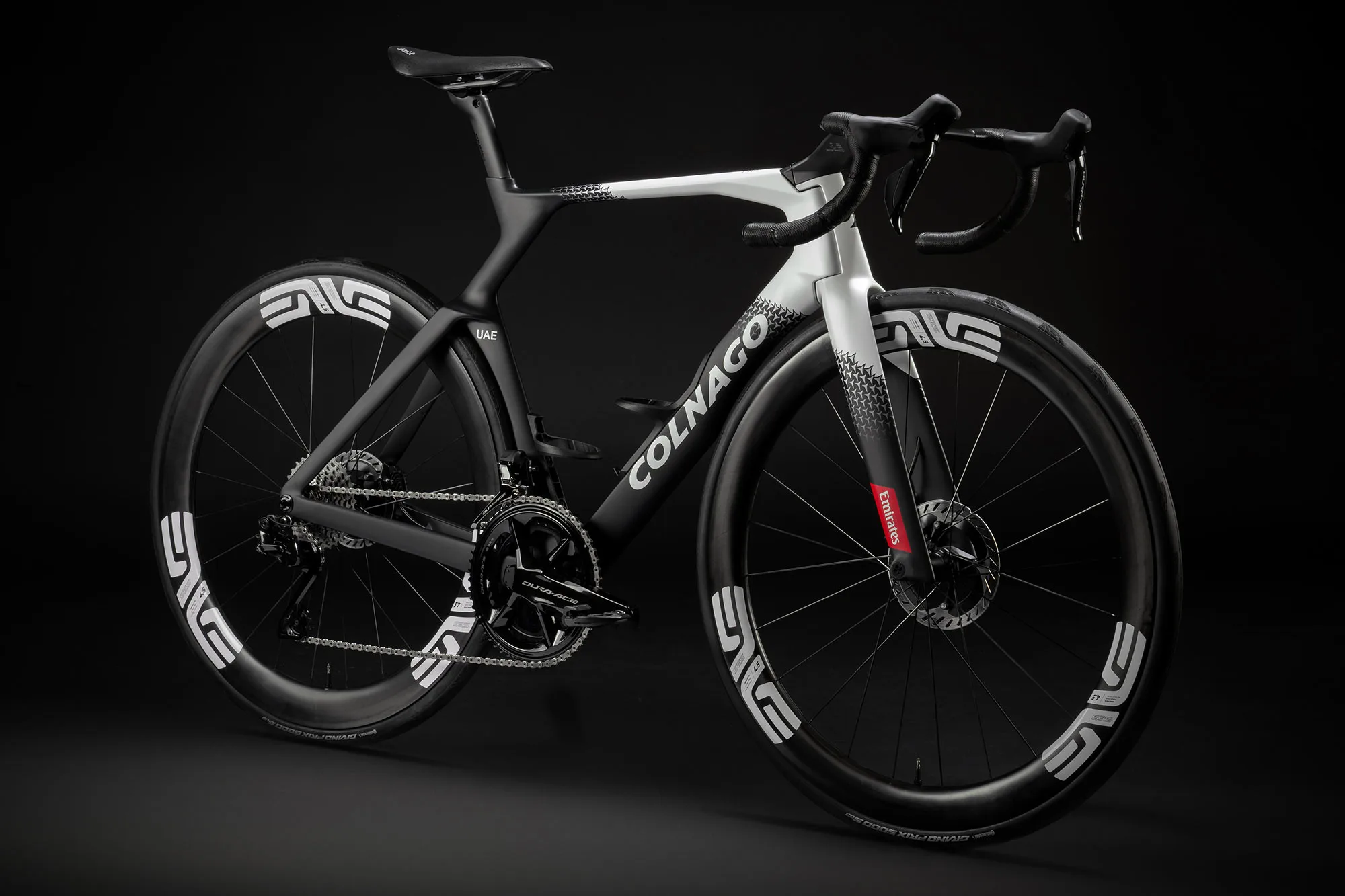
This slippery all-new Colnago Y1Rs is available from your local dealer now as a frame kit from $6750 / 6710€ if you feel like you need to completely customize your own unique aero road race bike build. That includes the all-new frame, fork, headset, forward-swept handlebars, seatpost, and integrated bottle cages.
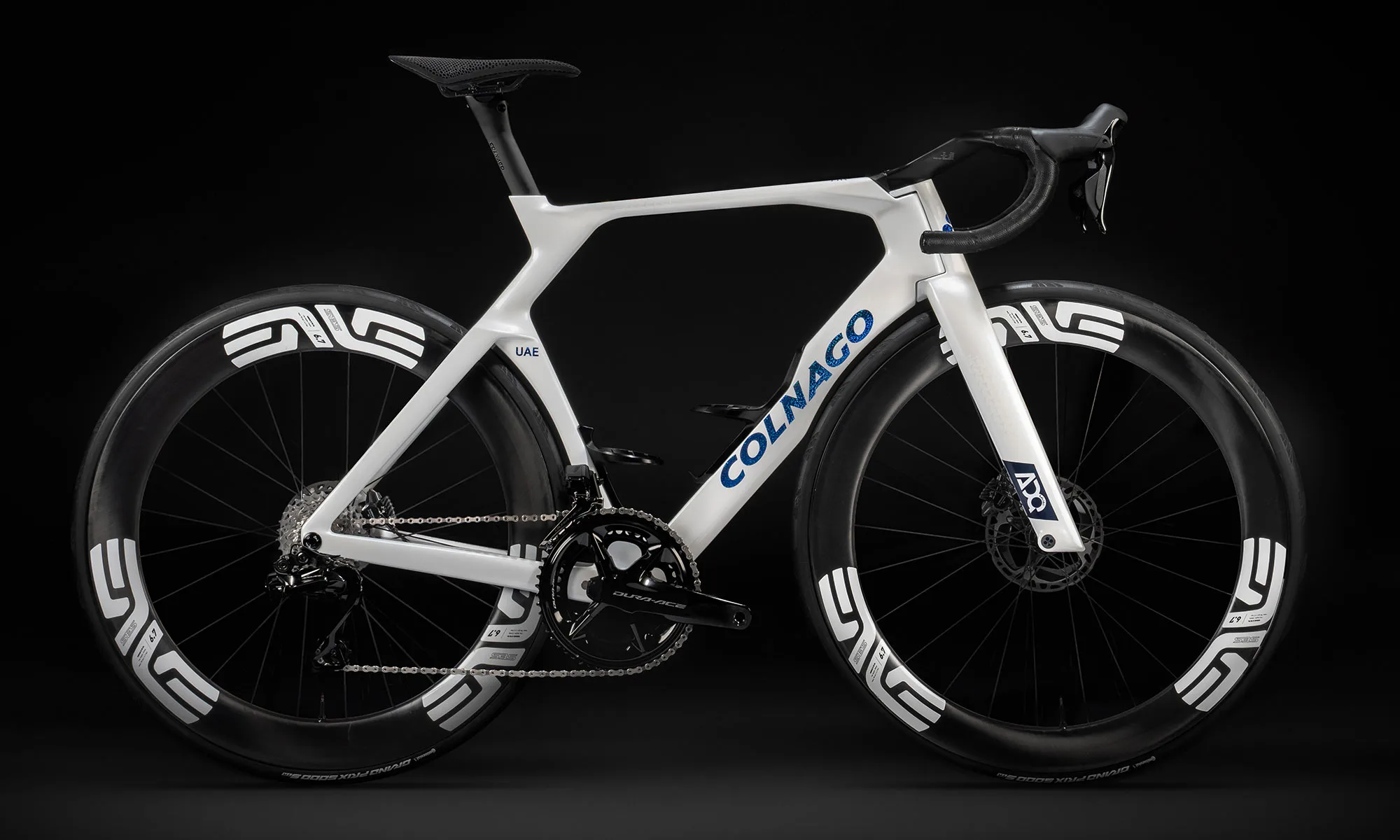
Or you can pick from 1 of 5 premium complete bike builds, all with top-tier groupsets only. The most ‘affordable’ complete option features a SRAM Red AXS group & carbon Vision 45 wheels starting at 12,300€, or a Shimano Dura-Ace Di2 build with the same wheels for 13,200€. Shimano C50 or ENVE SES 4.5 wheels (at a claimed 7.2kg complete) add 1800€ or 3000€, respectively.
Or opt for a complete Campagnolo Super Record Wireless gruppo like Pogačar had been racing on with Bora Ultra WTO wheels for a princely 16,500€ sum. (Although, UAE Team Emirates & UAE Team ADQ both switch to Shimano in 2025!)
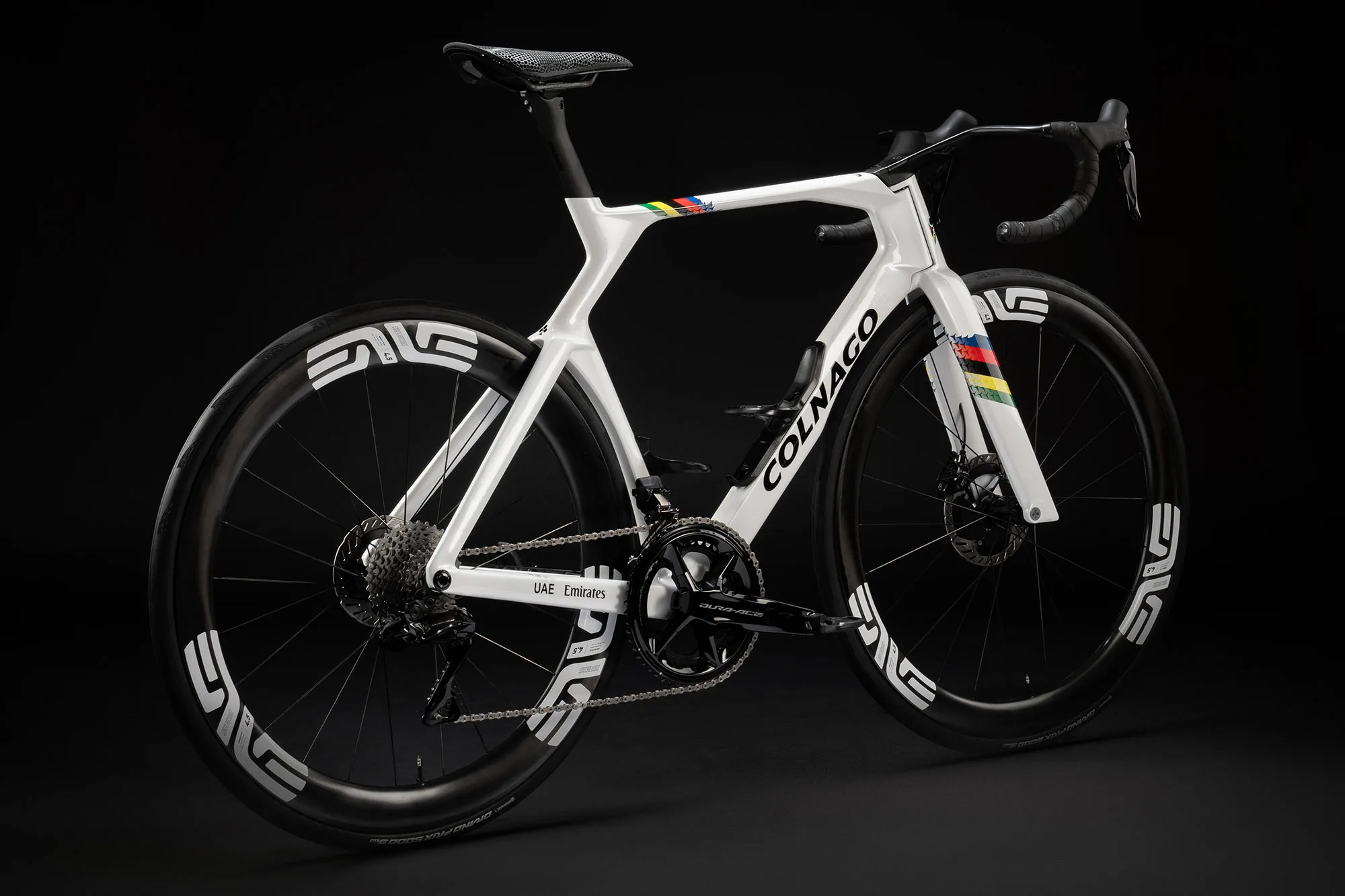
There are even three paint jobs available for that full pro look – UAE Team Emirates’ black & white replica, the UAE Team ADQ women’s glittery white replica, or a Pogi World Champ Rainbow edition to take it over the top.


